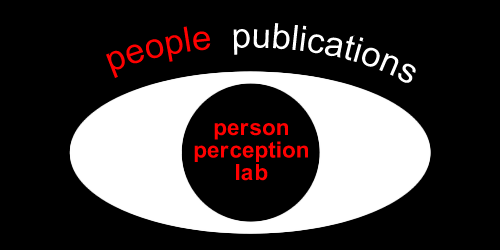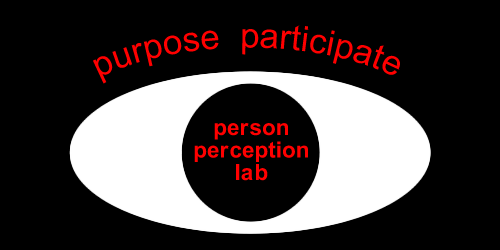| |
In
Press
Dallimore,
C.J., Smith, K. Hutchison, J., Slessor, G., & Martin, D. (In Press).
Many mickles make a muckle: Evidence that gender stereotypes re-emerge
spontaneously via cultural evolution. Personality and Social Psychology
Bulletin.
2024
Martin,
D., Hutchison, J., Konopka, A.E., Dallimore, C.J. Slessor, G., &
Swainson, R. (2024). Intergroup processes and the happy face advantage:
How social categories influence emotion categorization. Journal
of Personality and Social Psychology, 126(3), 390-412.
2023
Lee,
N. A., Martin, D., & Sui, J. (2023). Accentuate the positive: Evidence
that context dependent self-reference drives self-bias. Cognition,
240, 105600.
Sedlar,
N., Irwin, A., Martin, D., & Roberts, R. (2023). A qualitative systematic
review on the application of the normalisation of deviance phenomenon
within high-risk industries. Journal of Safety Research, 84, 290-350.
2022
Cunningham,
S. J., Vogt, J., & Martin, D. (2022). Me first? Positioning self
in the attentional hierarchy. Journal of Experimental Psychology:
Human Perception and Performance, 48(2), 115.
2021
Allan,
K., Oren, N., Hutchison, J., & Martin, D. (2021). In search of a
Goldilocks zone for credible AI. Scientific Reports, 11(1),
1-13.
Fernandes,
E. G., Phillips, L. H., Slessor, G., & Tatler, B. W. (2021). The
interplay between gaze and consistency in scene viewing: Evidence from
visual search by young and older adults. Attention, Perception,
& Psychophysics, 1-17.
Lee,
N.A., Martin, D. & Sui, J. (2021). A pre-existing self-referential
anchor is not necessary for self-prioritisation. Acta Psychologica,
219, 103362.
Hutchison,
J., Ross, J., & Cunningham, S. J. (2021). Development of evaluative
and incidental self-reference effects in childhood. Journal
of Experimental Child Psychology, 210,
105197.
MacKay,
J. R., Nordmann, E., Murray, L., Browitt, A., Anderson, M., & Hutchison,
J. (2021). The Cost of Asking:‘Say that Again?’: A Social
Capital Theory View Into How Lecture Recording Supports Widening Participation.
In Frontiers in Education (p. 367). Frontiers.
Nordmann,
E., Hutchison, J., & MacKay, J. R. (2021). Lecture rapture: the
place and case for lectures in the new normal. Teaching in Higher
Education, 1-8.
2020
Nordmann,
E., Horlin, C., Hutchison, J., Murray, J. A., Robson, L., Seery, M.
K., & MacKay, J. R. (2020). Ten simple rules for supporting a temporary
online pivot in higher education. PLoS Computational Biology.
2019
Ross,
J., Hutchison, J., Cunningham, S.J., (2019). The Me in memory: The role
of the self in autobiographical memory in development. Child Development.
Slessor,
G., Finnerty, A., Papp, J., Smith, D.T., & Martin, D. (2019). Gaze-cueing
and endogenous attention
operate in parallel. Acta Psychologica, 192, 172-180.
2018
Cunningham,
S.J., Ross, J., Scott, L., Martin, D., & Hutchison, J. (2018). Applying
self-processing biases in education: Improving learning through ownership.
Journal of Applied Research in Memory and Cognition, 7, 342-351.
Hutchison,
J., Cunningham, S.J., Slessor, G., Urquhart, J., Smith, K., & Martin,
D. (2018). Context and perceptual salience influence the formation of
novel stereotypes via cumulative cultural evolution. Cognitive Science,
42, 168-212.
2017
Allan,
K., Martin, D., & Cunningham, S. J. (2017). Simulation-based mentalizing
generates a ‘proxy’ self-reference effect in memory. Quarterly
Journal of Experimental Psychology, 70, 1074-1084.
Bulmer,
M., & Izuma, K. (2017). Implicit and Explicit Attitudes Toward Sex
and Romance in Asexuals. The Journal of Sex Research, 1-13.
Martin,
D., Cunningham, S.J., Hutchison, J., Slessor, G. & Smith, K. (2017).
How societal stereotypes
might form and evolve via cumulative cultural evolution. Social and
Personality Psychology Compass, 11.
Swainson,
R., Martin, D., & Prosser, L. (2017). Task-switch costs subsequent
to cue-only trials. Quarterly Journal of Experimental Psychology,
70, 1453-1470.
2016
Bailey,
P. E., Szczap, P., McLennan, S. N., Slessor, G., Ruffman, T., & Rendell,
P. G. (2016). Age-related similarities and differences in first impressions
of trustworthiness. Cognition and Emotion, 30, 1017-1026.
Slessor,
G., Venturini, C., Bonny, E. J., Insch, P. M., Rokaszewicz, A., &
Finnerty, A. N. (2016). Specificity of age-related differences in eye-gaze
following: evidence from social and nonsocial stimuli. The Journals
of Gerontology Series B: Psychological Sciences and Social Sciences, 71,
11-22.
Swainson,
R., Martin, D., & Prosser, L. (2016). Task-switch costs subsequent
to cue-only trials. Quarterly Journal of Experimental Psychology,
69, 1-18.
2015
Martin,
D., Swainson, R., Slessor, G., Hutchison, J., Marosi, D., & Cunningham,
S.J. (2015). The simultaneous extraction of multiple social categories
from unfamiliar faces. Journal of Experimental Social Psychology,
60, 51-58.
2014
Bailey,
P.E., Slessor, G., Rendell, P.G., Bennetts, R.J., Campbell, A., &
Ruffman, T. (2014). Age differences in conscious versus subconscious social
perception: The influence of face age and valence on gaze following. Psychology
and Aging, 29, 491-502.
Martin,
D., Hutchison, J., Slessor, G., Urquhart, J., Cunningham, S.J., &
Smith, K. (2014). The spontaneous formation of stereotypes via cumulative
cultural evolution. Psychological Science, 25, 1777-1786,
doi:10.1177/0956797614541129
Slessor,
G., Phillips, L.H., Ruffman, T., Bailey, P.E., & Insch, P. (2014).
Own-age biases in deception detection. Cognition and Emotion, 28,
493-506.
Slessor,
G., Bailey, P.E., Rendell, P.G., Ruffman, T., Henry, J.D., & Miles,
L.K. (2014). Examining the time course of young and older adults’
mimicry of enjoyment and non-enjoyment smiles. Emotion, 14, 532.
2013
Slessor,
G., Riby, D.M., & Finnerty, A.N. (2013). Age-related Differences in
Processing Face Configuration: The Importance of the Eye Region. Journal
of Gerontology: Psychological Sciences, 68, 228-231.
Swainson,
R., & Martin, D. (2013). Covert judgements are sufficient to trigger
subsequent task-switching costs. Psychological Research, 77, 434-448.
Wheeler,
R., Allan, K., Dimitris, T., Martin, D., & Gabbert, F. (2013). Explicit
mentalizing mechanisms and their adaptive role in memory conformity. PLoS
one, 8, e62106.
2012
Allan,
K., Midjord, J. P., Martin, D. & Gabbert, F. (2012). Memory conformity
and the perceived accuracy of self versus other. Memory and Cognition,
40, 280-286.
Martin,
D., Slessor, G., Allen, R., Phillips, L. H., & Darling, S. (2012).
Processing orientation and emotion recognition. Emotion, 12, 39-43.
Slessor,
G., Phillips, L.H., Bull, R., Venturini, C., Bonny, E., & Rokaszewicz,
A. (2012). Investigating the "Deceiver Stereotype": Do Older
Adults Associate Averted Gaze with deception? Journal of Gerontology:
Psychological Sciences and Social Sciences, 67, 178-83.
Wyer,
N. A., Martin, D., Pickup, T, & Macrae, C. N. (2012). Individual differences
in (non-visual) processing style predict the face inversion effect. Cognitive
Science, 36, 373-384.
2011
Insch,
P. M., Bull, R., Phillips, L. H., Allen, R. D. & Slessor, G. (2011).
Adult aging, processing style and the perception of biological motion.
Experimental Aging Research, 38, 169-185.
Martin,
D. & Greer, J. (2011). Getting to know you: From view-dependent to
view-invariant repetition priming for unfamiliar faces. Quarterly
Journal of Experimental Psychology, 64, 217-223.
Phillips,
L.H. & Slessor, G. (2011). Moving beyond basic emotions in aging research.
Journal of Nonverbal Behaviour, 35, 279-286.
2010
Darling,
S. D., Martin, D., & Macrae, C. N., (2010). Categorical proactive
interference effects occur for faces. European Journal of Cognitive
Psychology, 22,1001-1009.
Martin,
D., & Macrae, C. N. (2010). Processing style and person recognition:
Exploring the face inversion effect. Visual Cognition, 18, 161-170.
Martin,
D., Cairns, S. A., Orme, E., DeBruine, L. M., Jones, B. C., & Macrae,
C. N. (2010). Form-specific repetition priming for unfamiliar faces. Experimental
Psychology, 57, 338-345.
Slessor,
G., Miles, L., Bull, R. & Phillips, L. H. (2010). Age-Related Changes
in Detecting Happiness. Psychology and Aging, 25, (1), pp. 246-250.
DOI: 10.1037/a0018248
Slessor,
G., Phillips, L. H. & Bull, R. (2010). Age-Related Changes in the
Integration of Gaze Direction and Facial Expressions of Emotion. Emotion,
10 (4), pp. 555-562. DOI: 10.1037/a0019152
Slessor,
G., Laird, G., Phillips, L. H., Bull, R. & Filippou, D. (2010). Age-Related
Differences in Gaze Following: Does the Age of the Face Matter?. Journals
of Gerontology. Series B, Psychological Sciences and Social Sciences,
65 (5), pp. 536-541. DOI: 10.1093/geronb/gbq038
2009
Brebner,
J. L., Martin, D., & Macrae C. N. (2009). Dude looks like a lady:
Exploring the malleability of person categorization. European Journal
of Social Psychology, 39, 1109-1119.
Carey,
D. P., Martin, D., Smith, D. T., Smith, G., Skriver, J., Rutland, A.,
& Shepherd, J. W. (2009). The bi-pedal ape: How plastic are side biases
in footedness? Cortex, 45, 650-661.
Darling,
S. D., Martin, D., Hellmann, J. H., & Memon, A. (2009). Some witnesses
are better than others. Personality and Individual Differences. 47,
369-373.
Martin,
D., Nind, L. K., & Macrae, C. N. (2009). Lateralized Repetition Priming
for Unfamiliar Faces. Experimental Psychology, 56, 165-172.
van
Leeuwen, M. L., van Baaren, R. B., Martin, D., Dijksterhuis, A., &
Bekkering, H. (2009). Executive functioning and imitation: Increasing
working memory load facilitates behavioural imitation. Neuropsychologia,
47, 3265-3270.
2008
Slessor,
G., Phillips, LH. & Bull, R. (2008). Age-Related Declines in Basic
Social Perception. Psychology and Aging, 23 (4), pp. 812-822.
DOI: 10.1037/a0014348
2007
Macrae,
C. N. & Martin, D. (2007). A boy primed Sue: Feature based processing
and person construal. European Journal of Social Psychology, 37, 793-805.
Martin,
D. & Macrae, C. N. (2007). A face with a cue: Exploring the inevitability
of person categorization. European Journal of Social Psychology, 37,
806-816.
Slessor,
G., Phillips, L. H. & Bull, R. (2007). Exploring the Specificity of
Age-Related Differences in Theory of Mind Tasks. Psychology and Aging,
22 (3), pp. 639-643.
|
|


